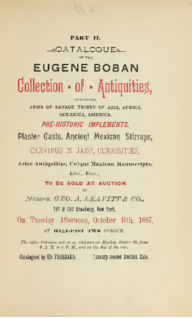long and sturdy Mousterian jasper backed-knife ca. 50 000BC
Pricing & History
-
Sold for
Start Free Trial or Sign In to see what it's worth.
- Sold Date
- Source eBay
The Neandertal was named after theologian Joachim Neander, who lived nearby in Düsseldorf in the late 17th century. "Neander" is a classicized form of the common German surname Neumann. In turn, Neanderthals were named after "Neander Valley", where the first Neanderthal remains were found. The term Neanderthal Man was coined in 1863 by Anglo-Irish geologist William King. From the period called "Mousterian" (150 000 - 40 000 b.c.) tools made of stone, settlement sites and some parts of human skulls were found. Evidence for hunters and collectors in this period was found in Bavaria, Baden-Württemberg and other parts of Germany. Neanderthals are thought to have used tools of the Mousterian class, which were often produced using soft hammer percussion, with hammers made of materials like bones, antlers, and wood, rather than hard hammer percussion, using stone hammers. A result of this is that their bone industry was relatively simple. However, there is good evidence that they routinely constructed a variety of stone implements. Neanderthal (Mousterian) tools most often consisted of sophisticated stone-flakes, task-specific hand axes, and spears. Many of these tools were very sharp. There is also good evidence that they used a lot of wood, objects which are unlikely to have been preserved until today. Typ: long and sturdy jasper
read more
Items in the Price Guide are obtained exclusively from licensors and partners solely for our members’ research needs.
If this item contains incorrect or inappropriate information please contact us here to flag it for review.
If you are the originator/copyright holder of this photo/item and would prefer it be excluded from our community, contact us here for removal.
If you are the originator/copyright holder of this photo/item and would prefer it be excluded from our community, contact us here for removal.




















